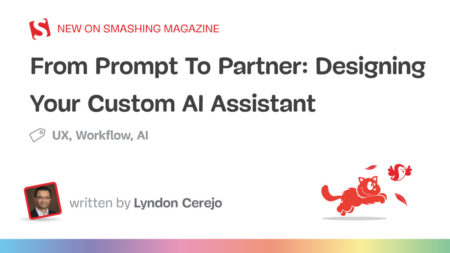Many infrastructure technology teams believe they have mastered infrastructure automation, but the data tells a different story. We commissioned a survey to explore the state of infrastructure automation, and this research uncovered a stark gap between perception and reality. While 45% of organizations believe they have achieved a high level of infrastructure automation, only 14% exhibit the behavior and technology patterns of infrastructure automation excellence.
This is one of the illuminating findings of our survey of 413 infrastructure tool purchase decision-makers and influencers, conducted by Panterra. Full results are detailed in “The State of Infrastructure Automation” report, available for download.
What I find most compelling about the survey revelations—and what the report addresses in detail—is the critical challenge facing technology decision-makers: balancing the need for speed with the necessity of control. In the pursuit of rapid deployment, many teams have sacrificed security, governance, and operational stability. The most successful organizations—those we classify as “Leaders”—have found a way to break free from this “Speed-Control Paradox,” achieving both velocity and control. Their success offers a blueprint for others to follow.
What Infrastructure Automation Leaders Do That Others Don’t
The report uncovered clear patterns among the most automation-mature organizations—those who have mastered the Speed-Control Paradox:
- Developer Self-Service with Guardrails: Leaders empower developers to deploy infrastructure independently while embedding safeguards. Leaders have built high-velocity environments where developers can focus on building rather than troubleshooting: 61% of Leaders have streamlined workflows and reduced friction, compared to 8% of companies who are classified as just getting started with Infrastructure Automation.
- Platform Engineering for Consistency: Leaders are five times more likely to have implemented a platform engineering team than their less-advanced peers: 29% of Leaders have implemented platform teams compared to just 7% of total respondents. Leaders don’t rely on ad-hoc automation; they establish dedicated platform teams to create standardized workflows and reusable templates, ensuring consistency across environments.
- Security as a Built-In Foundation: More than half (58%) of Leaders have cut security incidents, and 56% report fewer compliance violations versus 36% of total respondents. Leaders integrate automated security checks, policy enforcement, and drift detection into every stage of their automation pipeline. Security is not an afterthought; it is a continuous, proactive process.
- Cost Optimization as a Priority: Leaders view cost efficiency as essential to business success: 51% of Leaders cite cost savings & ROI as a top business metric, compared to 41% of respondents overall. By leveraging automated cost estimation and policy enforcement to curb overprovisioning and prevent waste, 47% of Leaders have successfully reduced infrastructure costs, compared to 32% of all respondents.
- Orchestration Over Automation: The most advanced teams go beyond tool adoption. They orchestrate the entire infrastructure lifecycle—provisioning, configuration, security, and governance—into a unified, automated pipeline. This end-to-end orchestration is what drives true automation maturity and results like these: Leading companies are twice as likely to get infrastructure deployments right on the first try, four times more likely to provision new resources in four hours or less, and five times more likely to deploy changes in production daily or multiple times a day. In contrast, over 50% of organizations take a week or more to deploy infrastructure changes in production, and 43% need to rerun their infrastructure deployments more than four times to get it right.
Is Your Organization an Automation Leader?
Where are you on the adoption continuum? Your organization may be an Experimenter, testing out some tools. Or perhaps you are an Adopter, implementing some automation but struggling with standardization and governance. More progressive companies will be Optimizers, having made significant progress with automated deployments and governance, and focusing now on addressing gaps in security, compliance and scalability. And bravo to you if your organization is a Leader, with automation, security, compliance and scalability built into every process.
Ask yourself these questions to help clarify your organization’s current standing:
- Are we automating for speed alone, or are we orchestrating security, compliance, and cost control alongside it?
- How much of our infrastructure is truly managed by Infrastructure as Code (IaC), and how are we managing drift?
- Are developers empowered with self-service tools, or are they still waiting on DevOps and platform teams to unlock progress?
- Is security embedded from the outset, or do we discover vulnerabilities after deployment?
- Do we measure success by deployment frequency alone, or do we also measure by efficiency, cost savings, and risk reduction?
How to Achieve Infrastructure Automation Excellence
Here’s the best news that our study reveals: Any organization can achieve infrastructure automation excellence by adopting a deliberate, strategic approach. Endeavor to do these five things:
- Benchmark Your Maturity: Begin with an honest assessment. Use available self-assessment tools to understand where you stand on the automation maturity curve. Recognizing gaps is the first step toward improvement.
- Shift Left on Security & Compliance: Integrate security and compliance checks early in your infrastructure planning and lifecycle. Automated validation processes prevent issues from reaching production, reducing risk and minimizing downtime.
- Balance Speed with Governance: Foster a culture where speed and security are not competing priorities but complementary goals. Empower developers through self-service while establishing clear policies and automated guardrails.
- Standardize Through Platform Engineering: Centralize automation efforts under a platform team that aligns tools, workflows, and best practices across the organization. This team should serve as an enabler, not a gatekeeper.
- Measure What Matters: Move beyond deployment velocity as the sole metric. Track cost efficiency, security incidents, and infrastructure stability. A balanced scorecard approach fosters sustainable automation progress.
True infrastructure automation leadership is not about moving fast—it is about moving fast with certainty. To achieve this, Leaders invest in processes and team structures that ensure automation is both agile and secure.
From Experimentation to Excellence
Wherever you are on the automation continuum, you will inevitably encounter the Speed-Control Paradox along the way. The good news is that the blueprint for success is now clearer than ever. Leaders have shown that it is possible to deliver at the speed of innovation without sacrificing control.
We’d love to hear more about your automation journey and share how we can help. Come see us at KubeCon, booth N560. And join us for OpenTofu Day on April 1, the day before the main event kicks off.
And don’t forget to download a copy of the research report and take advantage of our free assessment tool. See you at KubeCon!
The post Report shows overinflated opinion of infrastructure automation excellence appeared first on SD Times.
Source: Read MoreÂ

